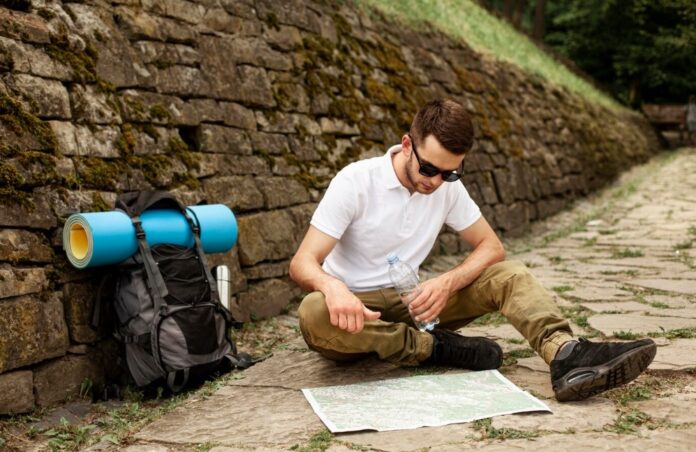Thru staying nicely hydrated and eating masses of fluids as you trek, you may be able to live energized, acclimate to the altitude, and take within the extremely good views. one of the well-known trekking circuits in Nepal, the Annapurna Circuit path takes trekkers via much less-visited villages, scenic valleys, and high, wild mountain passes in the Himalayas. Get Those Permits Now. As funktastic as all this being stuck inside has had you wishing your little funk butt could get some trail, that’s the one thing we insist you do before your funktastic little butt gets its funktastic big butt to the trail as a single ticket or a whole band of tickets: Get them permits.
To navigate problem-free, legally, and safely, it is necessary to understand which permits are required and how and where they can be obtained. In this blog, we summarise Annapurna Circuit permits, where to get them from, and what you need to do before you leave.
Significance of Annapurna Circuit Trek Permits – Why Necessary?
The trekking right in Nepal is not absolute, and to trek in Nepal, the entire trekkers are required to obtain trek permits before trekking for the management of tourism, along with ensuring the trekkers’ safety before trekking and natural and cultural preservation in the trekking district. The Annapurna Circuit route leads trekkers through national conservation areas and with views of remote small villages and a possibly challenging pass. Read more. The permits allow officials to have at least a general sense of numbers and to be prepared for an emergency on their trails, but they are also used to finance maintenance and building on the trails. Lacking the proper paperwork and you could be fined or banned from entering at checkpoints.
Two Essential Permits Needed: An Explainer of What Each Is For
Annapurna Circuit Trek Permits. There are two permits required to trek the Annapurna Circuit: a TIMS Card and an ACAP Permit.
(c) TIMS Card (Trekker’s information management System) policy was implemented to maintain database and the tourists security, recording of tourists was a must, it ena bles the authorities to keep a check on the tourists for the emergency services and not to forget its free data being used for the uplift of the trekking sector in the country.
What is an ACAP Permit? The meaning othe f the ACAP abbreviation is Annapurna Conservation Area Project. It is acquired by people who pass through lower or upper Annapurna, and the funds collected from it are used to work for the environment, together with the education of the local people, and also to protect their environment in the local area.
How to Get a TIMS Card -and Why You Should Get One: A Guide to Getting a TIMS Card
TIMS card application. Go to your nearest valley transport division office and take a TIMS card, and paste your photograph there. The card wipes clear basic trekking details, your addresses, and some emergency contacts.
There are several variations of the TIMS Card (depending on the trekking route and how you are trekking). If you are hiking on your own, you must have a green card. If it is through a guide or agency, then you need the blue card. Be prepared to provide the embassy with your trekking dates, the route you plan to trek, and a local contact in Nepal — usually a hotel or guide agency.
How to Obtain the Permit & What are the Fees For?
It can be obtained in the same place as the TIMS Card. The app can also be physically taken to the Nepal Tourism Board or ACAP at their offices in Pokhara/Kathmandu.
Your permit applies to the whole of the Annapurna Conservation Area (ACA), and you must carry it with you at all times on the entire trek. All the money for it does get plowed right back into the trails, waste management, and other cultural and environmentally based projects of the villages which fall within the boundaries of the reserve.
Where To Get Both Permits In Kathmandu & Pokhara:
There are two places where you can go and do your permits – generally, these are Kathmandu and Pokhara. Sunday to Friday, the normal government business timings, counted from 10:00 am to 17; it’s at the opening time; you can drop in at the office in Bhrikutimandap in the capital, Kathmandu.
HIMALAYAN MENTORS can be booked at the PRODUCTIVE FACULTY cave on the Tibetan side, or the ACAP PERMIT office on Atlantic. 12 Stops Annapurna Circuit Trekkers from the Western Trailhead Shouldn’t Miss. These are where the Annapurna Circuit trek is a cakewalk.
Documents, Photos, and Fees at Stake 0:53 What’s in Play A Closer Look The Treasury Department has released just a small fraction of the documents that House Democrats are seeking in their effort to obtain President Trump’s financial data.
If you get your permit, then you need your original passport and one photocopy of your original passport, along with some passport-size photographs. You can also come along at least four of the 8-by-10s — just in case. And some even offer photo booths, for those all-important headshots.
ACAP Permit fee for foreign Trekkers is revised as per new rules of the Department of Immigration, Government of Nepal – It used to be NRs 3,000. For SAARC countries, it is still very less. TIMS Card costs 2,000 rupees for independent trekkers, and 1,000 rupees for trekkers traveling with agencies or guides. And fees are always cold, hard cash, too — in Nepalese rupees — so plan for that.
Securing Permits via Trekking Agency
In case you are trekking with a trekking company or a local guide, trekking permits will be arranged by the trekking agency. And that’s all forms, papers, and permits included. The rule’s change might benefit the consumer just a little bit since agencies can tack a minuscule processing fee onto the fee set by the government for the permit. It is the most famous trek that trekkers regularly pursue in Nepal, as a beginner category for beginners or those with insufficient time for it.
Obtain your permits the first thing in the morning so you do not have to stand in line. Typically busiest from late morning until early afternoon. A couple of other must-have checklists before you walk out the door: all your necessary documentation and money. Then, apart from keeping your clothes safe, all those permits/what-have-you that you produce at the check posts at each stage of the trek to keep them presentation-worthy (and dry) should also be zipped into a plastic bag. A laminated cover works too.
Take a picture with your phone of your permits in case you lose them. And, finally, doubly verify, as always, with the Nepal Tourism Board, nearer to your travels, when the rules may change at an unrelenting pace.
Loading at the Last, the Day Before Preparations, and stressing the Trek kickoff.
One of THOSE BIG (but EASY) pieces towards preparing for your trek? MAKE SURE U HAVE THE RIGHT PERMITS!!! Submitting the permits for the trek Annapurna Circuit. These are not just a record of your legit hiking — they do double duty as donations towards sustainable tourism and local conservation projects.
Because the fact is, if you get this step right (regardless whether you amass permits yourself, or even if you do so through a guide) it’s an indicator of a great, pain free, trekkers life at the start of a very responsible (obviously, somehow evitable exceptions aside) problem free, Himalayan part of your trek. With your documents in your pocket, you can focus on the adventure that awaits — soaring gorges, sky-scraping passes, and epic views of the Himalayas that will take your breath away.










